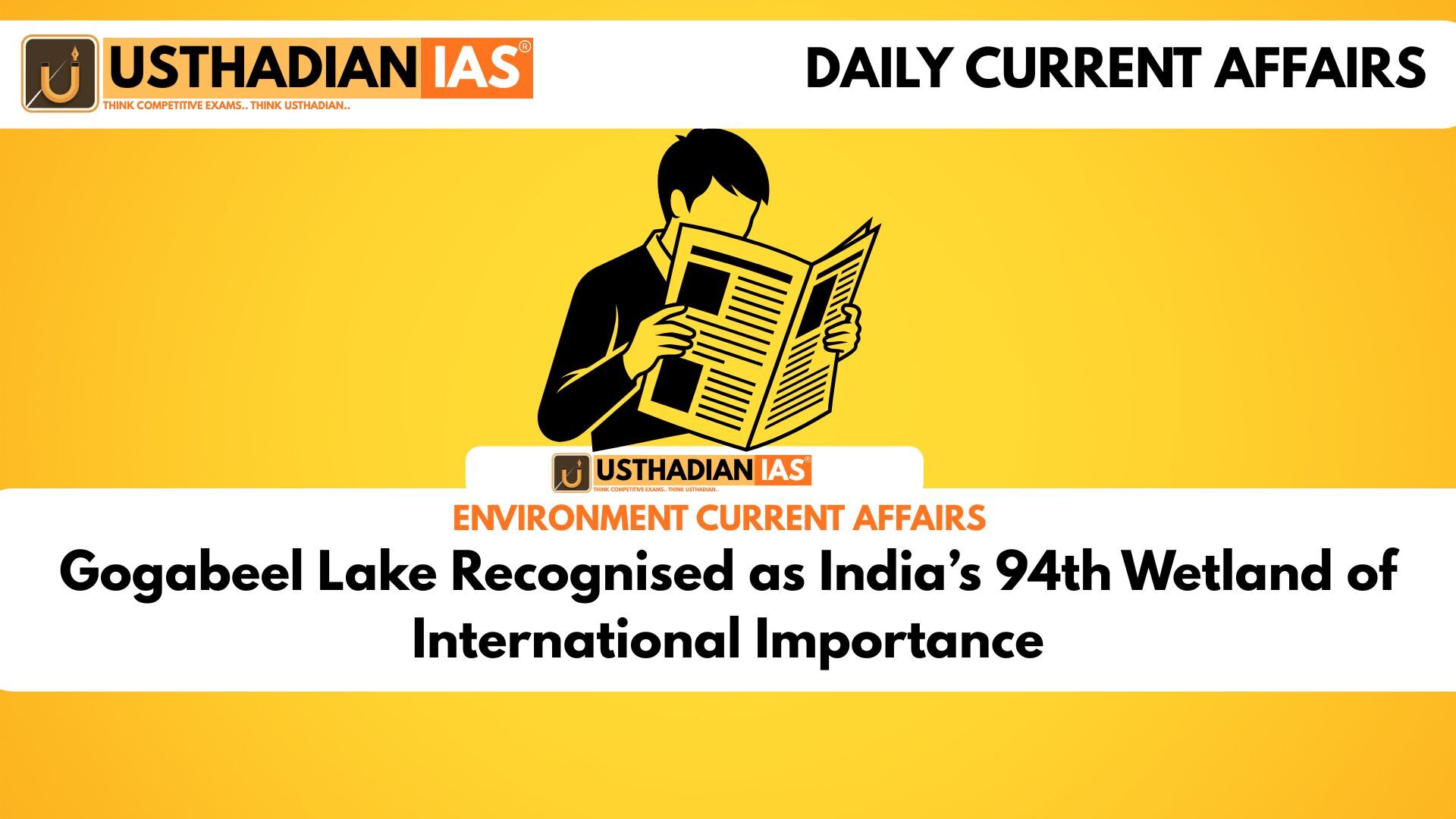Gogabeel Lake Gains Global Recognition
Gogabeel Lake Recognised as India’s 94th Wetland of International Importance: India has added another feather to its conservation cap with Gogabeel Lake in Katihar district of Bihar being declared the country’s 94th Ramsar Site. This inclusion highlights India’s continued commitment to preserving wetlands under the Ramsar Convention on Wetlands of International Importance. The lake, an oxbow formation between the Ganga and Mahananda rivers, stands as Bihar’s first community reserve, symbolising the power of local stewardship in environmental protection.
Static GK fact: The Ramsar Convention was signed in 1971 in Ramsar, Iran, making it one of the oldest international environmental agreements.
Ecological and Community Significance
Gogabeel Lake plays a vital role in maintaining the ecological balance of the region. During the monsoon season, it connects with major river systems, providing habitat for migratory birds, fish species, and aquatic vegetation. Its ecosystem supports biodiversity and acts as a natural sponge against floods. The recognition strengthens Bihar’s environmental profile, making it home to six Ramsar sites, following Gokul Jalashay and Udaipur Jheel.
Static GK Tip: Bihar became the sixth Indian state with multiple Ramsar sites, after Tamil Nadu, Uttar Pradesh, Maharashtra, Punjab, and Odisha.
India’s Expanding Wetland Network
India’s total Ramsar sites now stand at 94, covering more than 13.6 lakh hectares of wetland area. The country ranks third globally in the number of Ramsar sites — after the United Kingdom (176) and Mexico (144). Over the past decade, India has added 67 new wetlands, reflecting its growing global leadership in ecological conservation.
Union Environment Minister Bhupender Yadav lauded the achievement, emphasizing the government’s vision of sustainable wetland management through community engagement and ecological restoration projects.
Importance of Ramsar Recognition
Designation as a Ramsar site offers international recognition and protection for wetlands that play crucial roles in hydrological balance, flood control, groundwater recharge, and carbon sequestration. Wetlands also sustain local livelihoods, provide raw materials, and support agricultural productivity. India’s proactive approach highlights its reliance on nature-based solutions to address the challenges of climate change and environmental degradation.
Static GK fact: India joined the Ramsar Convention in 1982 and designated Chilika Lake (Odisha) and Keoladeo National Park (Rajasthan) as its first two Ramsar sites.
Towards Sustainable Conservation
The declaration of Gogabeel Lake underscores India’s community-driven conservation model, where local participation complements national and international frameworks. Such initiatives align with Mission LiFE (Lifestyle for Environment) and India’s commitment to achieving Sustainable Development Goals (SDG 13 & SDG 15). Gogabeel Lake stands as a living example of how ecological preservation and community welfare can coexist harmoniously.
Static Usthadian Current Affairs Table
Gogabeel Lake Recognised as India’s 94th Wetland of International Importance:
| Topic | Detail |
| Location of Gogabeel Lake | Katihar district, Bihar |
| Type of Lake | Oxbow lake between Ganga and Mahananda rivers |
| Ramsar Site Number for India | 94th |
| Date of Declaration | November 2025 |
| Total Ramsar Sites in India | 94 |
| Total Wetland Area Covered | Over 13.6 lakh hectares |
| Bihar’s Total Ramsar Sites | 6 |
| Global Rank of India in Ramsar Sites | Third (after UK and Mexico) |
| Year Ramsar Convention Signed | 1971 |
| India Joined Ramsar Convention | 1982 |
| First Indian Ramsar Sites | Chilika Lake and Keoladeo National Park |
| Environment Minister | Bhupender Yadav |
| Related Global Goal | Sustainable Development Goals 13 and 15 |
| Key Feature of Gogabeel Lake | Community-managed wetland |
| Linked Rivers | Ganga and Mahananda |
| Importance | Habitat for migratory birds and biodiversity hotspot |
| Bihar’s Other Ramsar Sites | Gokul Jalashay, Udaipur Jheel, etc. |
| Conservation Model | Community-led and nature-based |
| Related Mission | Mission LiFE |
| Convention Headquarters | Ramsar, Iran |








